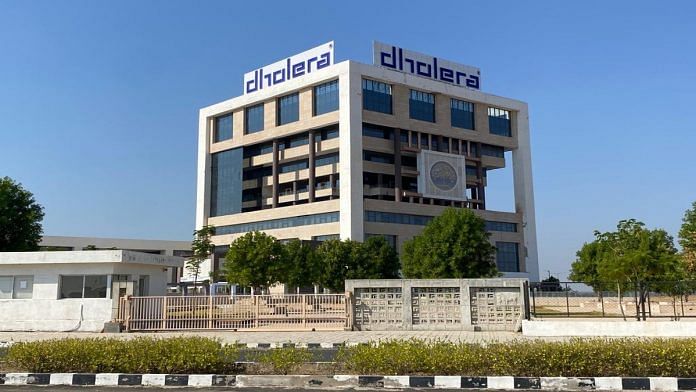Dholera (Gujarat): Large tracts of lush green fields, farmers tending to crops, villagers sitting in the open on cots, cattle roaming around — the rural setting as one enters Dholera village, some 100 km southwest of Ahmedabad, is quite a contrast to the shiny, hi-tech new industrial city that is coming up in the vicinity as a part of the Delhi-Mumbai Industrial Corridor (DMIC).
A pet project of Prime Minister Narendra Modi, Dholera, in fact, will be the first and largest of the eight greenfield industrial cities planned under DMIC to get off the drawing board. Being built up on a large swathe of undeveloped land, this “smart city”, so dubbed because of its use of technology and data, is also expected to be the home of Foxconn-Vedanta’s $20 billion semiconductor fabrication plant.
Overall, the Dholera Special Investment Region (DSIR) spans 920 sq km, encompassing some 22 villages. Currently, a bulk of the infrastructure development is happening on a 22.5 sq km area of the DSIR, called the activation zone.
With both the Centre and the Gujarat government pumping in money, work on the ground is moving at a hectic pace and the first phase of Dholera smart city is expected to be completed by 2025-26, a senior official of Dholera Industrial City Development Limited (DICDL), the Special Purpose Vehicle set up to implement the project, told ThePrint.
When ThePrint visited, the greenfield city was taking shape brick by brick, mostly in the activation zone.
“We are developing the infrastructure in the activation zone first. The land allotment process has already been started. By 2025-2026, the activation area is expected to be blooming with industrial operations and residential living,” a senior DICDL official told ThePrint.
Back when the DSIR project was approved and the government started acquiring land, farmers had protested, but the agitation died down after the government offered a generous compensation package. While some concerns remain, locals now are largely hopeful about the development and prospects that the project will bring.
Also read: Pending under UPA, speeding under NDA — 10 big-ticket infra projects that picked up after 2014
What’s been done so far?
Though the DMIC has been in the works for more than a decade now, work on developing Dholera started only in 2016. Larsen & Toubro were given the contract in 2017 to develop the roads and services in the activation zone.
Wide blacktop roads have been laid with trunk infrastructure like potable water lines, wastewater collection ducts, storm water drains, power distribution, and ICT (Internet Communication Technology) network running underneath.
Work is also on to set up a 4,400 MW capacity solar park that will power the industries and residences in the greenfield city. Facilities such as water treatment plants, elevated reservoirs for storing potable and recycled water, and common effluent treatment plants are in various stages of construction; a handful have been completed.
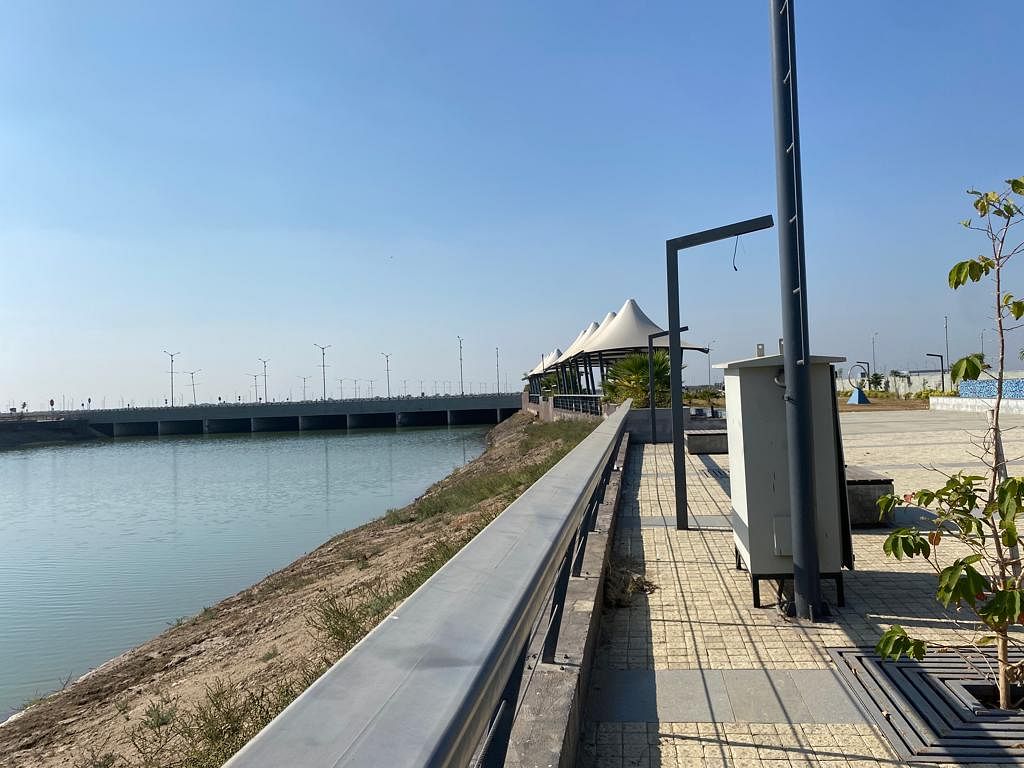
A maritime park comprising a 6.5-km artificial canal is being readied that will run alongside the residential and commercial zones. Almost 2.2 km of the canal with seating arrangements, landscape gardens, and the like is ready. A recreational zone, named Silk Route, with an open amphitheatre is being given the final touches.
Sectors demarcating residential, institutional, commercial, and industrial zones have been carved out in the activation zone and signages put up. The sectors have also been named — Agni Path, Shanti Path, Neer Path, and Vayu Path.
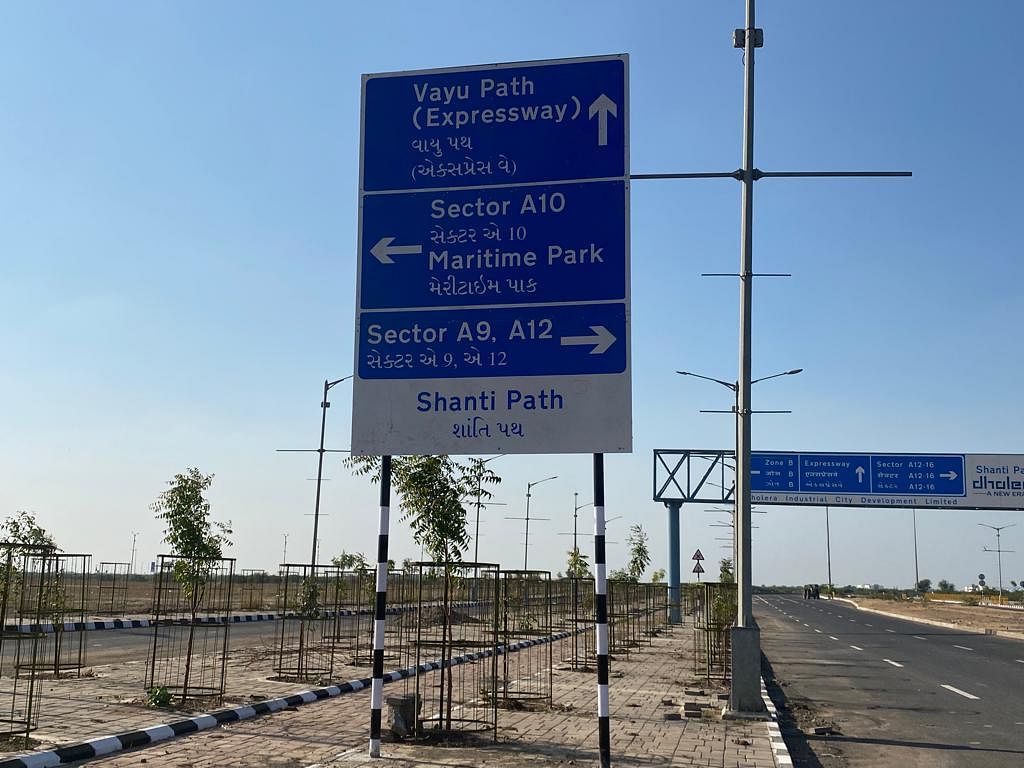
The city will cater to a population of 2 lakh. The official added that 99 per cent of underground utility and trunk infrastructure is ready in the activation zone.
Work on a four-lane expressway connecting Ahmedabad to Dholera is underway and a new international airport, located 15 km from the city, is expected to be operational by 2024. Right now, the nearest airport in Ahmedabad is located 117 km away.
Talks are also on to extend the Bhimnath-Dholera rail freight line for movement of cargo. The nearest railway station is at Bhavnagar, approximately 60 km away. “The Western Railway has already approved the Detailed Project Report, and further planning on establishing this rail link is under progress,” a second DICDL official said.
Once operational, Dholera will be among a handful of greenfield cities — including Chandigarh, Bhubaneswar, Gandhinagar, and Naya Raipur — that have come up in India post-Independence. It took a long time for many of them to come to life. Naya Raipur, for instance, continues to be largely uninhabited even today.
However, officials are convinced that the same fate will not befall Dholera.
“Dholera is a planned city with industrial establishments as a part of bringing a walk-to-work culture, thereby setting up a holistic environment for industries and its citizens,” Hareet Shukla, managing director, DICDL, told ThePrint. “In all these industrial corridors, the idea is to build trunk infrastructure with a plug-and-play utility network made available at the plot level.”
Magnet for developers, villagers sceptical
With work going on in just 22.5 sq km of activation area, it might be a while before the entire city is ready.
But signs of commercial activity on the ground can be seen as one approaches Dholera through a single-lane road. From Avirahi City to Nexa Evergreen Private Limited and Chandani Group, hoardings of real estate firms have popped up along the road leading up to Dholera, selling residential plots, villas and farmhouses. The Gujarat-headquartered Infinity Infra Group has already started building residential complexes inside DSIR.
Land prices have skyrocketed in the area like never before. But some villagers are reluctant to let their land go. Basudev Bhailal, 62, a farmer in Ambali, a village near Dholera, says depending on the location, a bigha of land is now fetching anywhere between Rs 5 lakh and Rs 40 lakh.
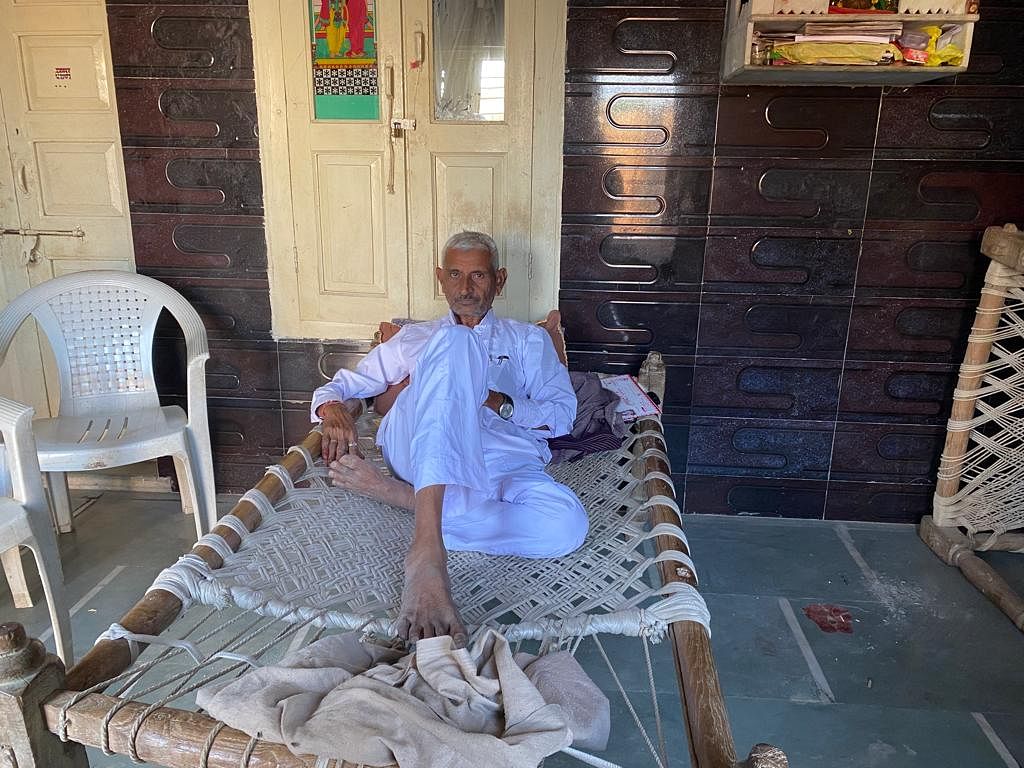
Bhailal has 23 bighas of farm land. “But I am not selling. If we sell our land, what will we eat?” he asks.
Residents living in villages in and around Dholera continue to eye the development of the greenfield city with scepticism although they view the future with a hopeful lens. “I see a lot of work going on in Dholera. I am sure development will happen but it isn’t happening yet. My children have not got a job now but maybe they will, once industries come up,” Bhailal told ThePrint.
Parshottambhai Popatbhai, a 50-something farmer in Saraisla village near Dholera had 70 bigha land till a year back when the Gujarat government acquired 35 bighas for the expressway project. Popatbhai, who grows jeera and cotton in his remaining 35 bighas, says that he now hopes that his children benefit from the development happening around Dholera.
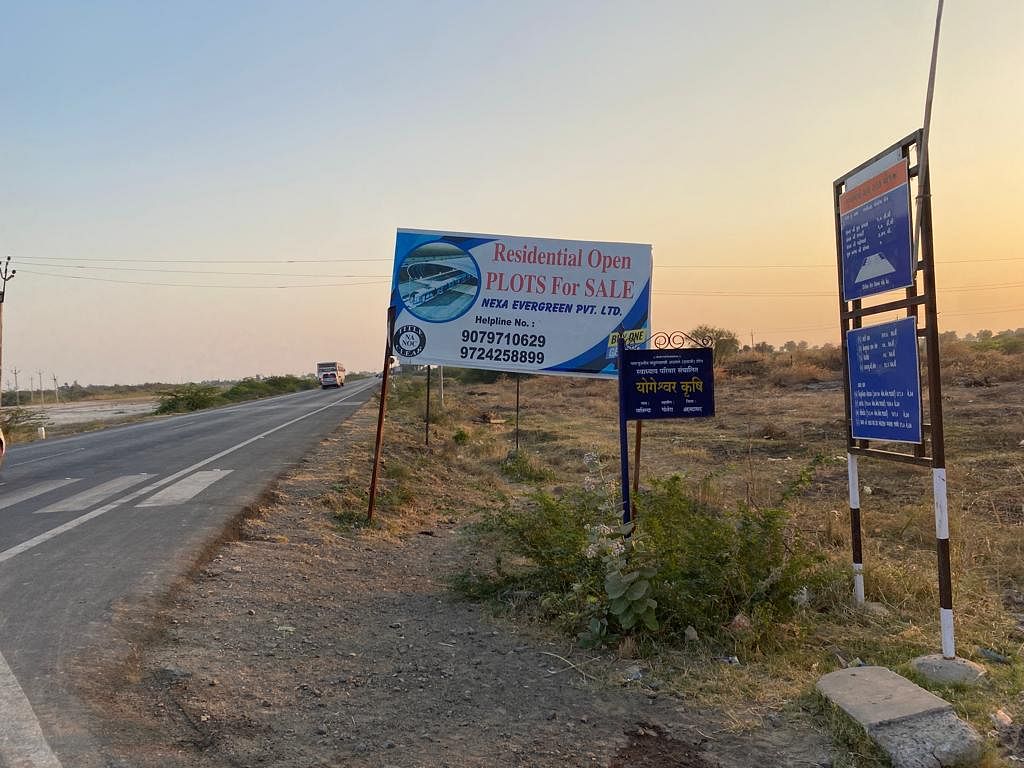
“I have not got any benefit but I hope the next generation does. I don’t want my children to leave home for other cities looking for jobs,” he says.
But there are others like Anandbhai Ramanuj, 37, whose life changed since work started in DSIR. Ramanuj’s father owned a truck and used to transport goods. But the earning was not enough to make ends meet for the five-member family. “I used to go to nearby cities of Bhavnagar and Ahmedabad for work. I was a computer operator. My salary was Rs 8,000 back in 2008. Dholera did not have anything,” he says.
In 2017, Ramanuj returned for good. “Companies like L&T came in and there was a demand for transport vehicles. I expanded my father’s business and bought two small cars followed by two trucks. Today, I earn anywhere between Rs 35,000 and Rs 40,000 a month,” he says, adding, “I now send my 10-year-old son to an English medium school in Dhandhuka taluka, some 27 km away from Dholera.”
Like Ramanuj, many villagers living in Dholera are seeing their life change. There are some 22 villages in and around the activation area and most of the residents are either farmers or fishermen.
Both the central and the state governments had joined hands to develop Dholera, DICDL officials told ThePrint. “Inside the DSIR, the state government has invested its land as a part of the joint venture to develop trunk infrastructure in the activation area. At the same time, the central government, through the National Industrial Corridor Development Corporation, has invested Rs 3,000 crore of cash equity in the project,” Shukla said.
From Tatas to Vedanta-Foxconn, a wait for industries
While 99 per cent of the trunk infrastructure in the activation zone is ready, DICDL is now waiting for big anchor firms to set up units in Dholera. So far, land has been allotted to two big private firms — Tata Power and ReNew. “ReNew has started work on the ground,” said a DICDL official.
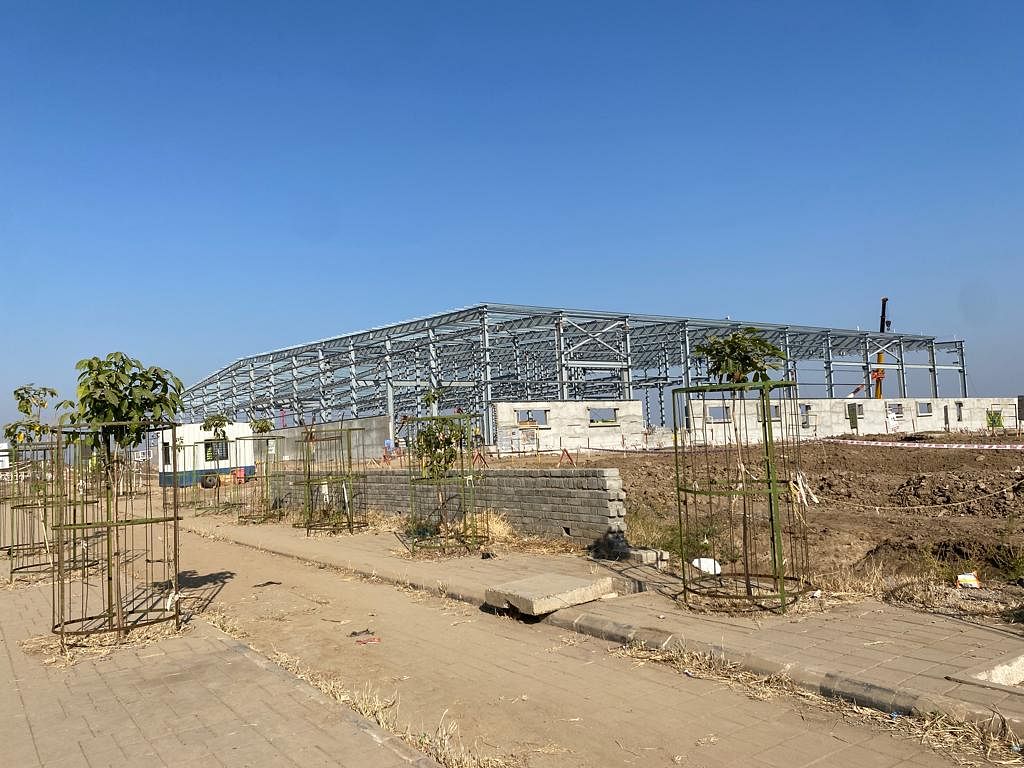
Besides, the application of Gujarat-based Chiripal Group, a solar film-making company, is under process.
DSIR got a leg-up after the Gujarat government signed an MoU with Vedanta-Foxconn for setting up the semiconductor ecosystem in Dholera. “The proposal to the Ministry of Electronics and Information Technology has been submitted for approval under the Production Linked Incentive (PLI) scheme. The final call of allotment and starting of work may be done only after confirmation from Vedanta-Foxconn team,” a senior DICDL official said.
Officials said that many large- and medium-scale industries have shown interest in setting up their businesses in Dholera. “Once we get some confirmation, we shall communicate the same,” one of them said.
The official added that interest shown by domestic and MNCs is natural considering the advantages that Dholera has to offer. “We have a blanket environment clearance from the Gujarat government. So firms won’t have to run from pillar to post to get environment clearances,” the official said.
Besides, the civic infrastructure will be comparable to international standards. “The power tariff in DSIR will be low. There will be clear land titles. The Dholera airport will be located at a distance of 15 km, and will cater to cargo,” the official said.
There’s also a promise of 24×7 uninterrupted power supply and Torrent Power has set up two substations here.
“The concept plan was developed under the Gujarat Special Investment Region Act of 2009. The master plan and development plan were prepared by various international consultants who were on board, such as HALCROW, Louis Berger, CISCO (ICT), Atkins, TCE, etc,” a third DICDL official said.
The official added: “DSIR has been inspired by the ancient city of Lothal, which was located close to Dholera in the Bhal region. Lothal was the mercantile hub of the region back then.”
(Edited by Smriti Sinha)
Also read: Pier by pier, girder by girder, how bullet train project’s 348-km Gujarat leg is gathering speed


